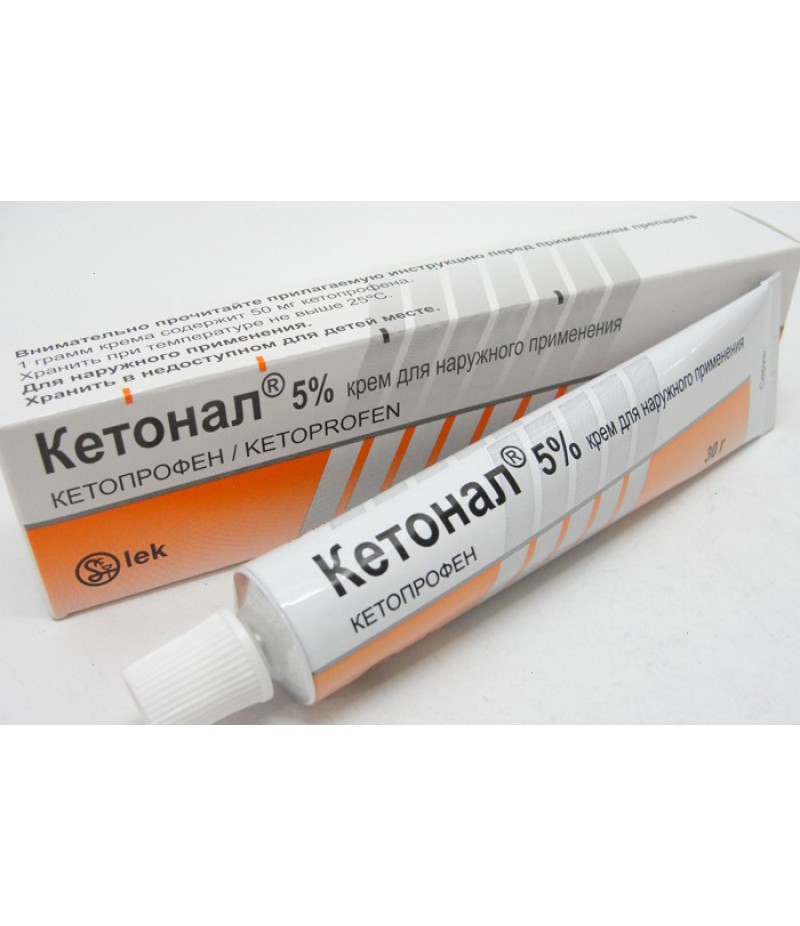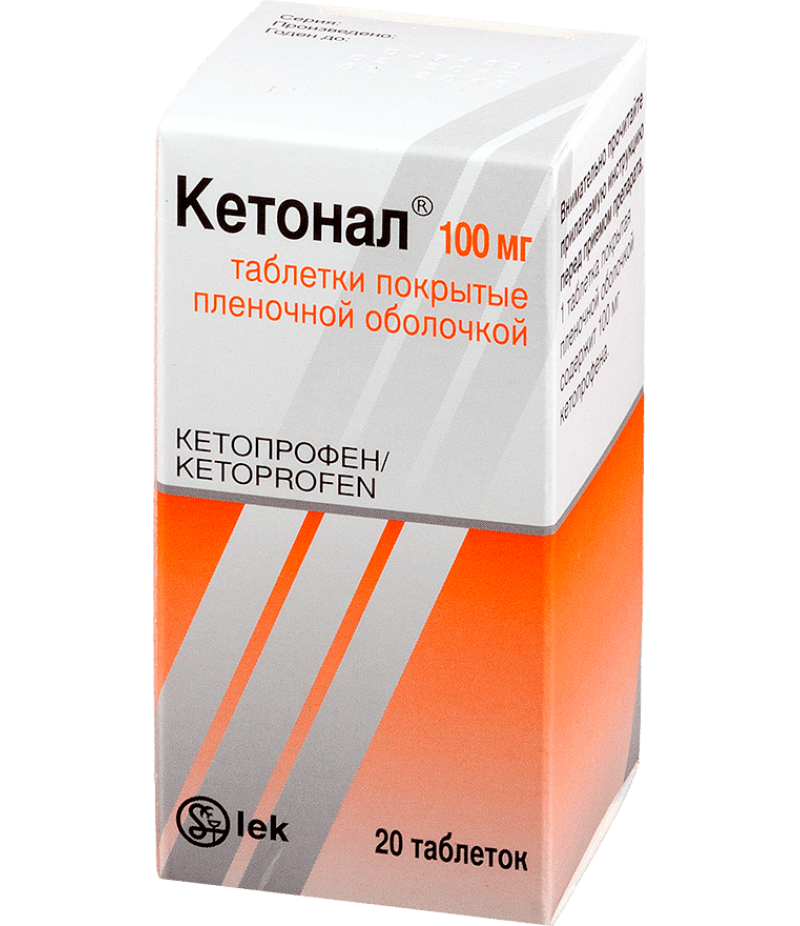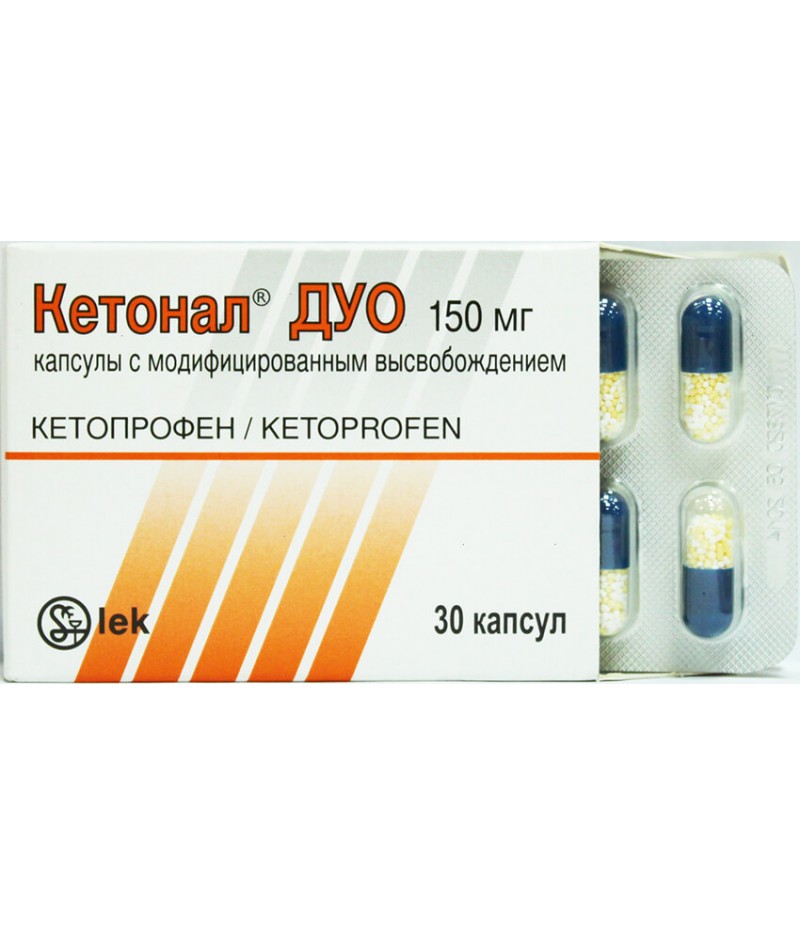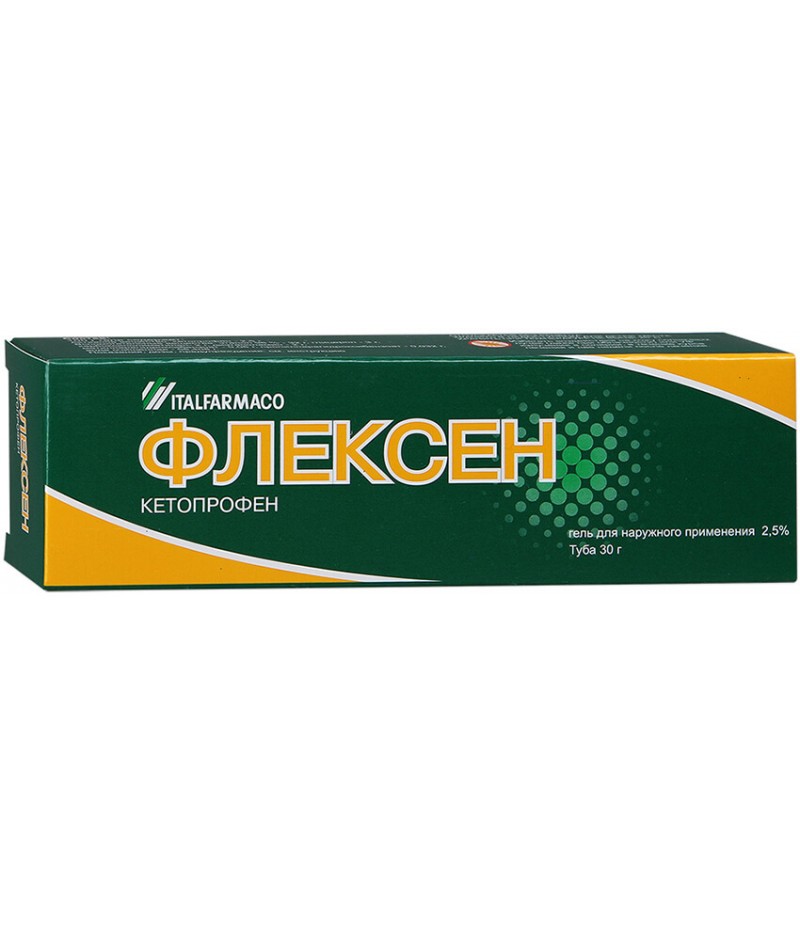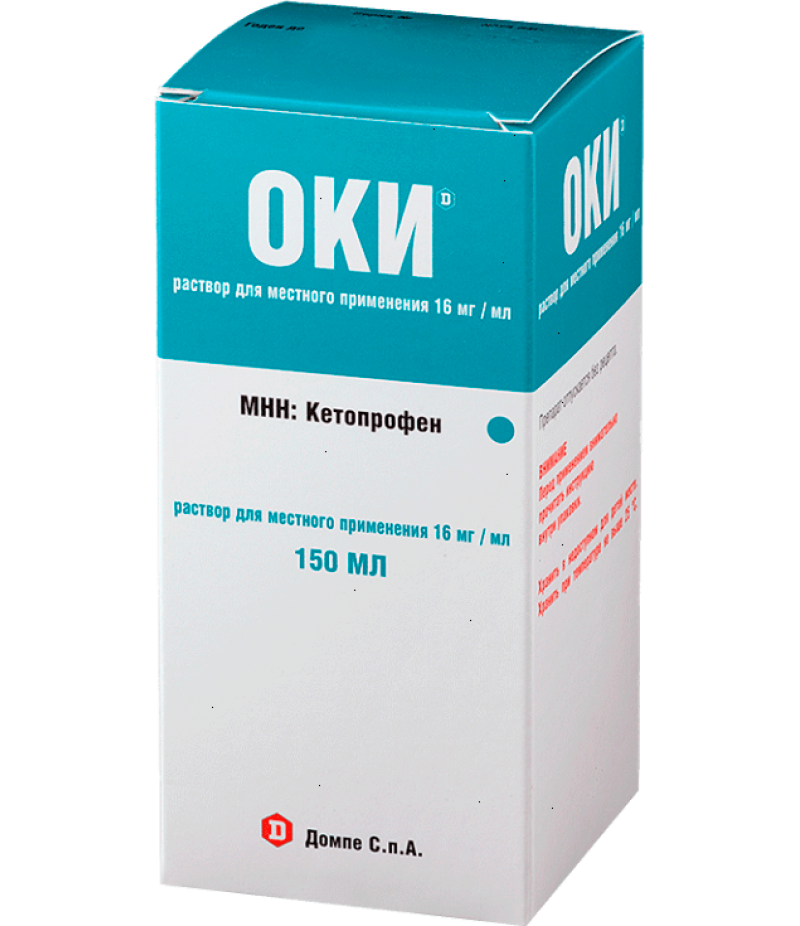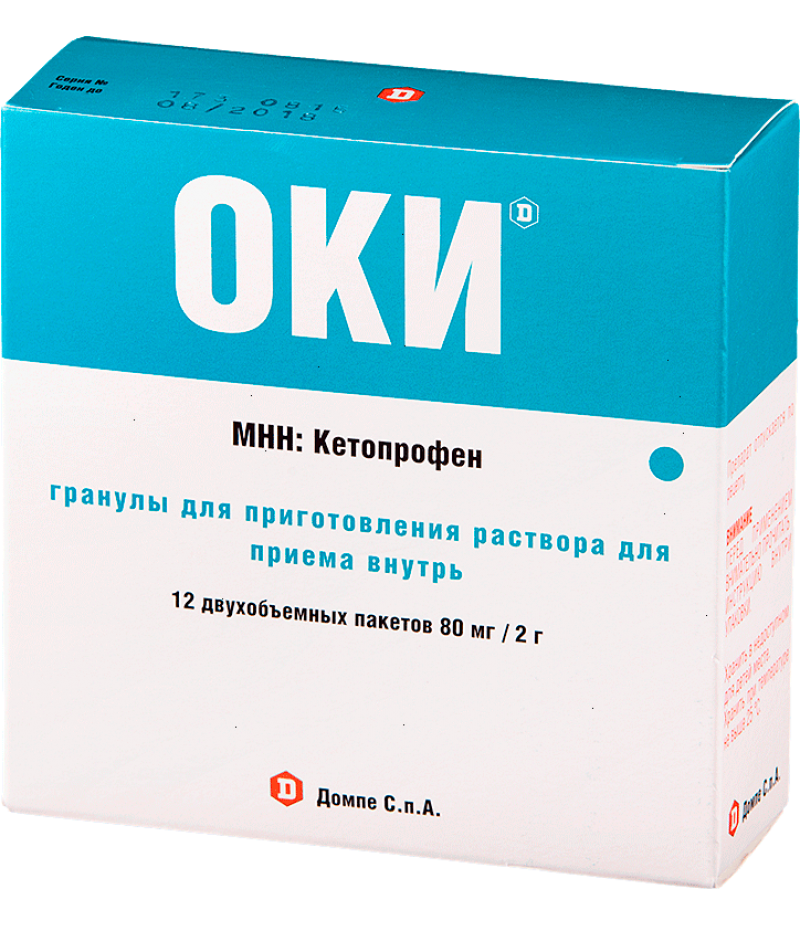Oki supp 160mg #10
- $15.99
- 3 or more $15.75
- Availability:In Stock
Oki user manualTo buy Oki just add it to your shopping cartDosage form and composition of Okirectal suppositories.One suppository contains:The active ingredient is ketoprofen lysine salt 160 mg;Auxili
Tags: supp
Oki user manual
To buy Oki just add it to your shopping cart
Dosage form and composition of Oki
rectal suppositories.
One suppository contains:
The active ingredient is ketoprofen lysine salt 160 mg;
Auxiliary components: semisynthetic glycerides 1640 mg
Description. Suppositories from white to light yellow torpedo shape.
Pharmacotherapeutic group. Non-steroidal anti-inflammatory drug (NSAID).
ATX code: M01AE03
Pharmacological properties
Oki has anti-inflammatory, analgesic and antipyretic effect. Inhibiting cyclooxygenase I and II type, inhibits the synthesis of prostaglandins. It has anti-bradykinin activity, stabilizes lysosomal membranes, and delays the release of enzymes that promote tissue destruction in chronic inflammation. Reduces the secretion of cytokines, inhibits the activity of neutrophils.
Reduces the morning stiffness and swelling of the joints, increases the volume of movements. Ketoprofen lysine salt, in contrast to ketoprofen, is a rapidly dissolving molecule with a neutral pH and almost does not irritate the gastrointestinal tract.
Pharmacokinetics
Suction. Ketoprofen lysine salt is rapidly absorbed: the time to reach the maximum concentration (Tshah) after rectal administration 45-60 minutes. The concentration in the plasma depends linearly on the dose taken. Distribution. Up to 99% of absorbed ketoprofen binds to plasma proteins, mainly with albumin. The volume of distribution is 0.1-0.2 l / kg. Easily passes through the histohematological barriers and is distributed in tissues and organs. Ketoprofen penetrates well into the synovial fluid and connective tissues. Although the concentration of ketoprofen in the synovial fluid is slightly lower than in the plasma, they are more stable (lasting up to 30 hours).
Metabolism. Ketoprofen is mainly metabolized in the liver, where it undergoes glucuronidation to form esters with glucuronic acid. Excretion. Metabolites are excreted mainly with urine (up to 76% after 24 hours). The drug does not cumulate.
Indications
Symptomatic treatment of inflammatory processes, accompanied by heat and pain, including inflammatory and rheumatic joint diseases:
rheumatoid arthritis
spondyloarthritis
osteoarthritis
gouty arthritis
inflammatory defeat of the periarticular tissues
Contraindications
Hypersensitivity (including other NSAIDs), aspirin asthma, peptic ulcer and duodenal ulcer (exacerbation), ulcerative colitis (exacerbation), Crohn's disease, diverticulitis, peptic ulcer, hemophilia and other disorders of coagulation blood, CRF, children's age (under 18 years), pregnancy (III trimester), lactation.
With caution - anemia, bronchial asthma, alcoholism, tobacco smoking, alcoholic liver cirrhosis, hyperbilirubinemia, liver failure, diabetes mellitus, dehydration, sepsis, chronic heart failure, edema, arterial hypertension, blood diseases (including leukopenia), glucose-6 deficiency -phosphate dehydrogenase, stomatitis, advanced age, pregnancy (I, II trimester).
In case of deterioration of the patient should stop treatment with the drug.
Dosing and Administration
One suppository 2-3 times a day. The maximum daily dose of 480 mg. In elderly patients, no more than 2 suppositories per day should be used.
Side effects of Oki suppositories
Gastrointestinal tract: abdominal pain, diarrhea, duodenitis, erosive-ulcerative lesions of the gastrointestinal tract, gastritis, hematomesis, esophagitis, stomatitis, melena.
Liver: increased bilirubin, increased "hepatic" enzymes, hepatitis, liver failure, increased liver size.
Nervous system: dizziness, hyperkinesia, tremor, vertigo, mood swings, anxiety, hallucinations, irritability, general malaise.
Organs of the senses: conjunctivitis, impaired vision.
Skin covers: urticaria, angioedema, erythematous exanthema, pruritus, maculopapular exanthema, increased sweating, multiform exudative erythema (including Stevens-Johnson syndrome).
Genitourinary system: painful urination, cystitis, swelling, hematuria, menstrual cycle disorder.
Hematopoiesis: leukocytopenia, leukocytosis, lymphangitis, reduction of prothrombin time, purpura, thrombocytopenia, thrombocytopenic purpura, enlarged spleen, vasculitis.
Respiratory system: bronchospasm, dyspnoea, sensation of spasm of the larynx, laryngospasm, laryngeal edema, rhinitis.
Cardiovascular system: hypertension, hypotension, tachycardia, pain in the chest, syncopal condition, peripheral edema, pallor.
Allergic reactions: anaphylactoid reactions, edema of the oral mucosa, swelling of the pharynx, periorbital edema.
Local reactions: burning, itching, heaviness in the anorectal area, exacerbation of hemorrhoids.
Overdose
At present, no cases of overdose with OCI have been reported.
Interaction
Inducers of microsomal oxidation in the liver (phenytoin, ethanol, barbiturates, flumecinol, rifampicin, phenylbutazone, tricyclic antidepressants) increase the production of hydroxylated active metabolites.
Reduces the effectiveness of uricosuric drugs, enhances the effect of anticoagulants, antiaggregants, fibrinolytics, ethanol, side effects of mineral corticosteroids, glucocorticosteroids, estrogens. Reduces the effectiveness of antihypertensive and diuretics.
Joint reception with other NSAIDs, glucocorticosteroids, ethanol, corticotropin can lead to the formation of ulcers and the development of gastrointestinal bleeding, an increased risk of kidney dysfunction.
Simultaneous administration with oral anticoagulants, heparin, thrombolytic agents, antiaggregants, cefapazone, cefamandole and cefotetan increases the risk of bleeding.
Increases hypoglycemic action of insulin and oral hypoglycemic drugs (dose recalculation is necessary).
Co-administration Oki with sodium valproate causes disruption of platelet aggregation. Increases the concentration in the plasma of verapamil and nifedipine, lithium preparations, methotrexate. Antacids and colestyramine reduce absorption.
Application during pregnancy and feeding. Like other NSAIDs, OCI should not be used in the III trimester of pregnancy. The use of the drug in I and II trimester should be carefully monitored by the attending physician. Breastfeeding with the use of the drug should be discontinued.
Special instructions
During treatment with Oki, it is necessary to monitor the picture of peripheral blood and the functional state of the liver and kidneys. If it is necessary to determine 17-ketosteroids, the drug should be discontinued 48 hours before the test.
Reception of ketoprofen can mask signs of an infectious disease. If the kidney and liver function is impaired, a dose reduction and careful monitoring is necessary. The use of ketoprofen by patients suffering from bronchial asthma can lead to an attack of bronchial asthma.
Women planning a pregnancy, should refrain from taking the drug, tk. can reduce the likelihood of implantation of the egg.
Influence on ability of driving of motor transport and management of mechanisms.
During the period of application of the drug, one should refrain from potentially dangerous activities related to the need for concentration of attention and rapid psychomotor reactions.
Form of issue
5 suppositories in an A1-foil strip. 2 strips in a cardboard box with instructions for use.
Shelf life - 5 years. Do not use the product after the date shown on the package.
Storage conditions
At a temperature of no higher than 25 ° C. Keep out of the reach of children.
Terms of leave from pharmacies
To buy Oki suppositories you don't need a prescription.


